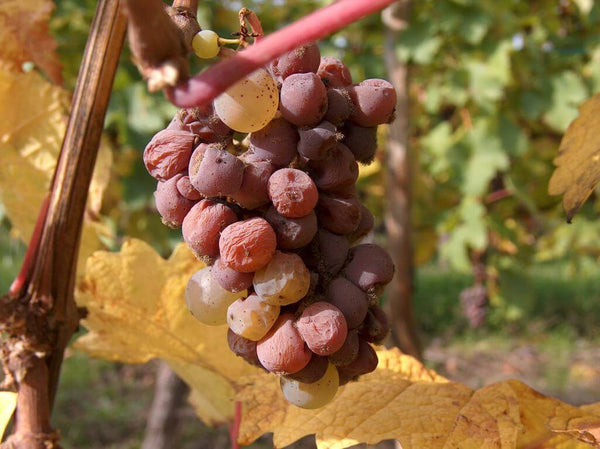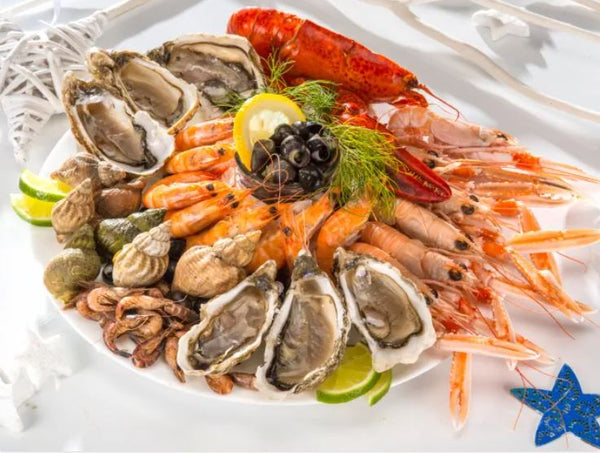If you are a fan of white wine , you have definitely already heard of the Riesling ! Symbol of Alsace , this one is in fact part of the 4 noble grape varieties of the region with the Gewurztraminer , Pinot Gris as well as the Muscat . However, its presence throughout the world is much larger than one might imagine and it can present very varied characteristics depending on its terroir of origin.
If you want to know more about Riesling, so you are in the right place ! Thanks to this article, you will discover his history and his places of culture , explore its taste characteristics as well as learning from tips to enjoy it in the best conditions.
Follow the leader !
History and places of culture of Riesling
If ampelographers almost all agree in recognizing Germany and the Rhine Valley as the very probable birthplace of Riesling, several hypotheses nevertheless exist as to its date of appearance.
The most likely of these, however, would be that Riesling is in fact the grape variety Argitis minor , a variety present since Antiquity ( 1st century BC) within the Rhine vineyard. The word " Rieslingen " (Riesling in German) only appeared in 1435, the term coming from " risen ", meaning to flow. This name comes from the sensitivity of the grape variety to coulure, a phenomenon causing the flowers to fall from the vine and consequently leading to a significant reduction in yields.
Recent DNA tests have identified that Riesling is the result of crossing of two other grape varieties : the white gouais (now extinct) as well as the traminer, better known under the name of Savagnin and still well established in the Jura .
It is only from the 15th century that the Riesling finally appears in Alsace and it would take until the 20th century and the 1960s for it to become the region's first grape variety.
Today, nearly 60,000 hectares of Riesling are planted in the world in many countries such as Austria, the United States, Australia and South Africa.
With 24,000 hectares, Germany represents 40% of the world's vineyards, with Riesling accounting for a quarter of the national vineyards.
In France, 4,000 hectares are planted in Alsace (more than 20% of the vineyard)...and that's about it because it is not present in almost no other region of our beautiful country.

Riesling Wine Types and Aromas
If Riesling is, in the overwhelming majority of cases, intended for the production of dry white wines , however, be aware that this is also often used in the assembly of certain sparkling wines like the Alsace sparkling wines . It is then regularly assembled with Pinot blanc, Pinot Auxerrois or even Chardonnay .Also, some Rieslings can have a certain sweetness in the mouth and be semi-dry, or even soft !
Although this is rarely the case in Alsace, Germany has indeed made it a speciality. In fact, the location of the vineyard being particularly northerly, a measured addition of sugar allows us to obtain better balances in the wines.
Therefore, if you come across a bottle of German Riesling with one of the following labels: following: Cabinet , Spätlese , Auslese , Beerenauslese (BA) or even Drying eerenauslese (TBA), know that these terms indicate the sugar concentration present in wine, from lowest to highest. The sweetest Rieslings can have notes of candied fruit , of exotic fruits or even of butter .
If we return to France (and therefore to Alsace), Riesling is used overwhelmingly to produce dry white wines with a nice acidity as well as a big minerality . In terms of aromas, citrus fruits (lemon, grapefruit) and the green apple are the most common markers. On beautiful terroirs, aromas of fishing , apricot , of beeswax and even of hydrocarbons (oil)!
Finally, Riesling is also known for being able to offer wines with a magnificent aging potential . Indeed, GOOD that the majority of the vintages produced are intended for consumption during the first three to five years, some Rieslings from the best terroirs can evolve positively over 20 or even 30 years ! Incredible aromas of beeswax and undergrowth then appear, as well as a tenfold minerality.

Food and wine pairings and serving temperature
With its acidity, its beautiful minerality as well as its rich bouquet of aromas, Riesling is definitely a partner of choice at mealtime.
So, with dry Rieslings, sublime agreements are possible on seafood and shellfish (oysters, shrimps, crabs, sea urchins etc.) as well as grilled fish (Cod, Sea Bass, Sea Bream etc.).
With complex Rieslings coming in particular from certain Great Growths Alsatians , the lobster Or scallops will also be divine. Finally, Riesling is a grape variety that combines also very good with goat or sheep cheese .
If you are moving towards a Semi-dry or sweet Riesling , THE spicy cuisines (Chinese, Thai, Vietnamese etc.) as well as some sweet and savory dishes will then be excellent acolytes. Certain blue-veined cheeses such as Roquefort will also be interesting to combine.
From a point of view serving temperature , Riesling is ideally enjoyed between 8 and 10°C . Any colder and you might not detect certain aromas. Any warmer and it would lose its pleasant freshness.
So you will have understood that, depending on its style and its terroir, Riesling can meet many of your cooking needs!

The best Rieslings
Although it is difficult to give an exhaustive list of the best Rieslings, La Cave Éclairée offers you here a fine selection exclusively from Alsace. From the pleasure of Riesling to the great wine for laying down, there is something for everyone. all tastes and budgets !
- Mittnacht Brothers Estate - Riesling Fossils
- Mittnacht Brothers Estate - Riesling Muehlforst
- Mittnacht Brothers Estate - Riesling Grand Cru Rosacker
- Domain Boehler - Riesling Holderhurst
- Barmès-Buecher Estate - Riesling Grand Cru Hengst
You are now an expert on Riesling! All you have to do now is take the plunge and make your choice from the lovely selection of The Illuminated Cellar . I promise you won't be disappointed...cheers!










2 comments
Bonjour Marina et merci pour votre commentaire ! Vous avez tout à fait raison, cela était mal exprimé dans l’article et je viens donc de corriger cet aspect. Merci pour votre vigilance !
À bientôt.
Bonjour,
Merci pour cet intéressant article, néanmoins, je vous recommande de vous pencher un peu plus sur les catégories de Riesling des vins allemands du Qmp ou du VDP- en effet, il ne s’agit pas du taux de sucre dans le vin, mais le taux potentiel dans le raisin: ce qui affecte le potentiel sucre résiduel, ainsi que les degrés d’alcool finaux. Vous pouvez en théorie trouver des Spätlese plus secs que des Kabinetts, selon les choix de vinification.
Belle journée.